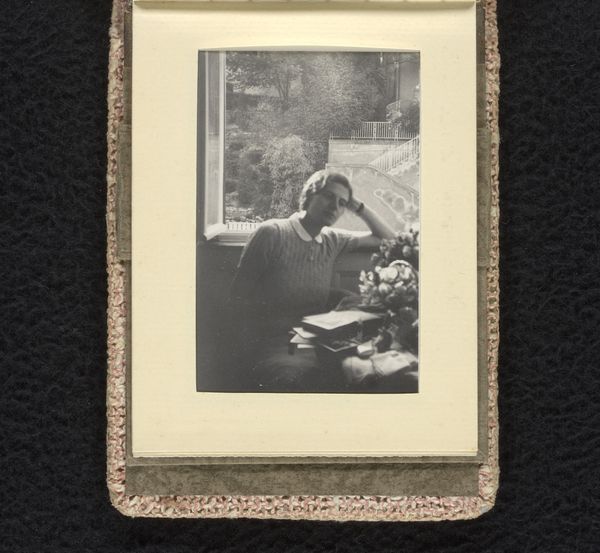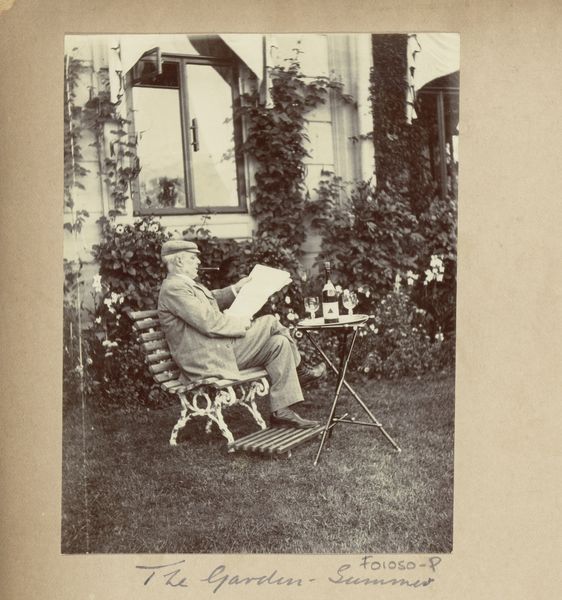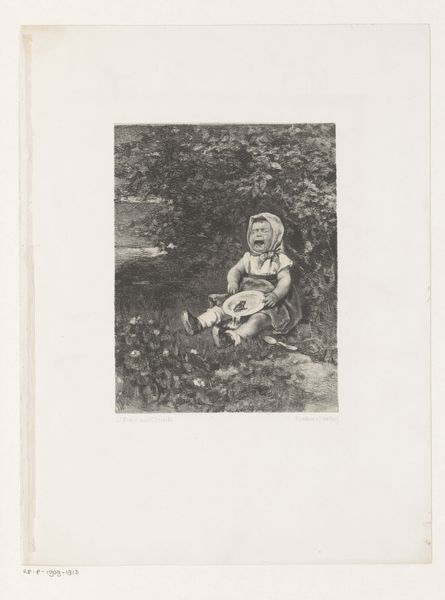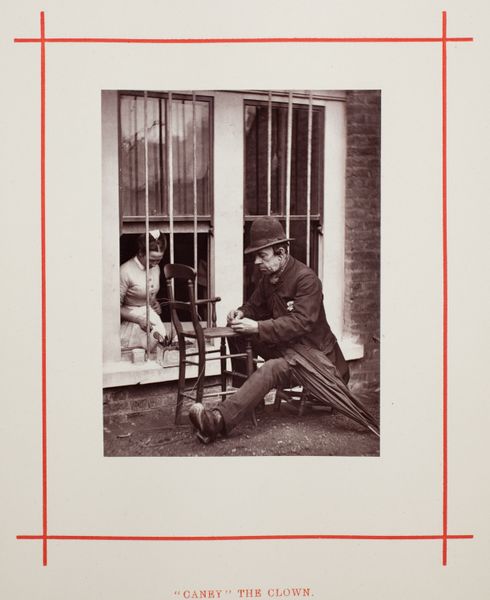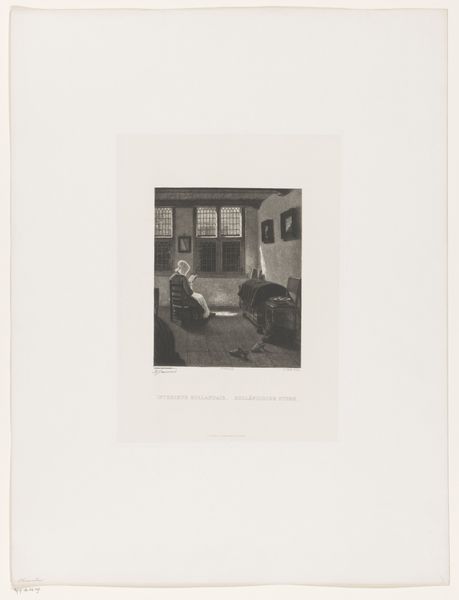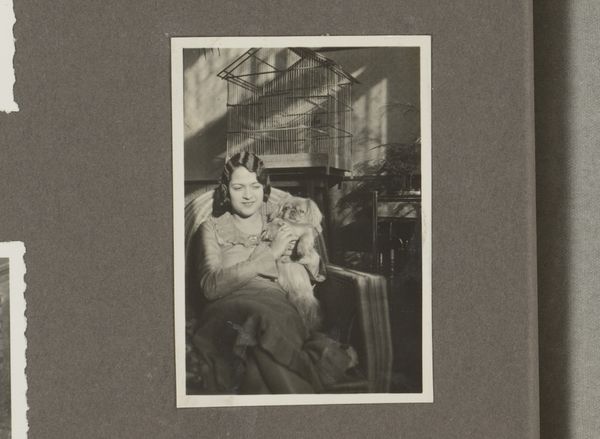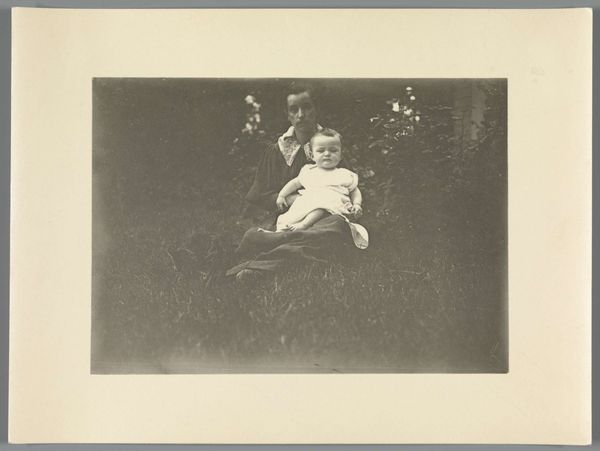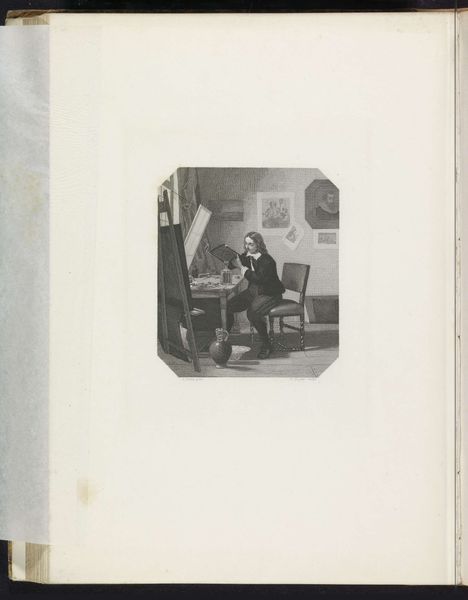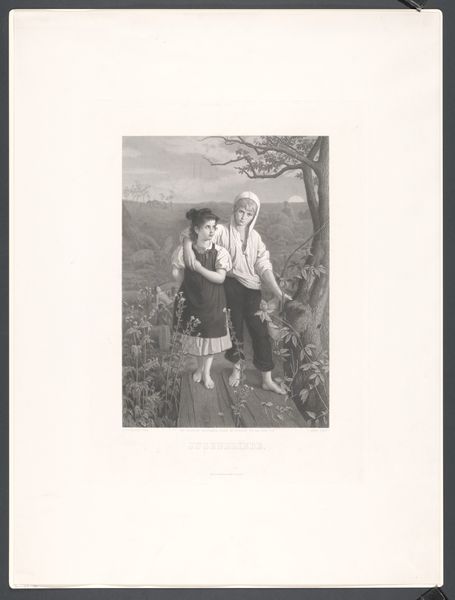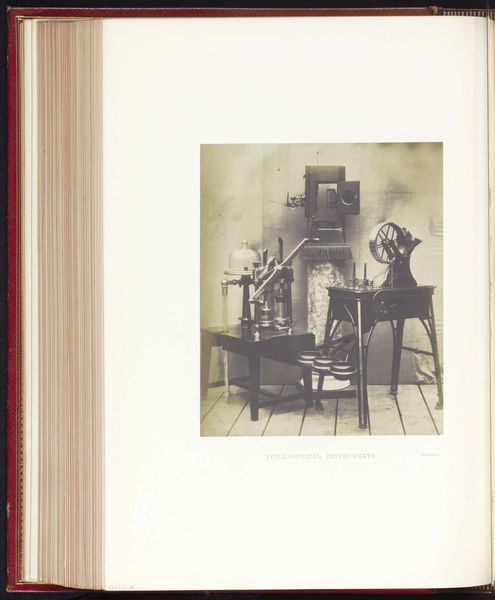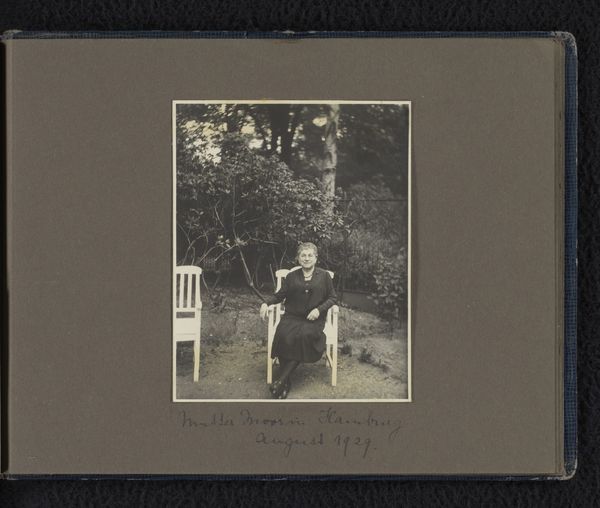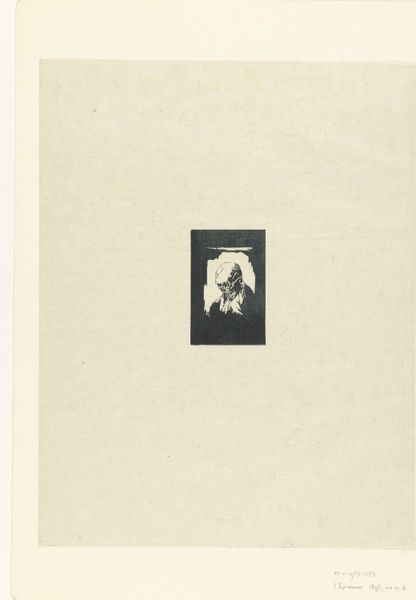
Copyright: Public Domain
Editor: So, this photograph, "Wols in Champigny-sur-Marne, August 1951," by Wols. It's a black and white image. I find it really intimate and almost melancholy. What symbols or hidden meanings do you see within it? Curator: The chair itself speaks to a kind of informal power. It’s not a throne, yet Wols reclines in it, hinting at artistic authority. Consider the dog at his feet, a common symbol of loyalty and fidelity. Editor: Loyalty to whom? Curator: Perhaps to his artistic vision, or to his patrons. What does the backdrop suggest to you? The rough stone building, the hint of a landscape. Editor: It feels very unrefined, very honest. Not overly staged, more authentic. Like his art. Curator: Precisely! There is no studio; he exists and creates outside conventional society. Notice how Wols engages with the camera, an open gaze as if revealing a part of himself and inviting a shared vulnerability. Editor: So, his look tells a story of honesty, paired with the raw location, reinforcing authenticity? Curator: Yes, in effect he controls the visual narrative in its entirety. The symbols—the dog, the chair, the location—together present his identity for the audience. Editor: Fascinating, I had no idea this image could carry such complex ideas. Thank you. Curator: A rewarding image is able to connect, offering insight into its subject, its symbolism, and its viewers.
Comments
No comments
Be the first to comment and join the conversation on the ultimate creative platform.
